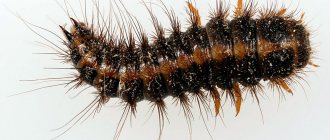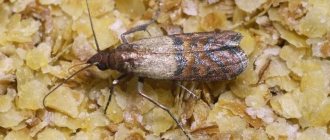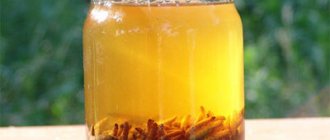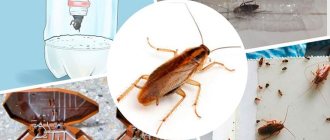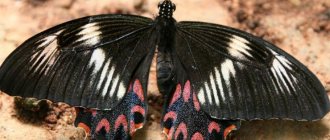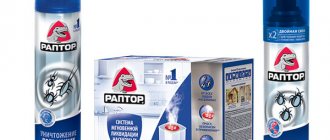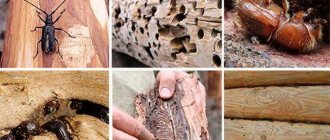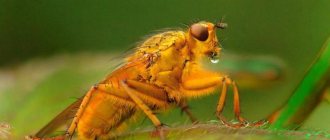House fly
The housefly or housefly is a representative of the family of True flies, which formed its own separate taxon in the course of evolution, splitting off from its wild relatives due to its attachment, so to speak, to human habitats rich in terms of food.
The answer to the question of what a fly looks like is easy to give. This pest cannot boast of anything outstanding in its appearance. This cheeky insect is usually no more than 1cm in length and has a simple gray body with a yellow tint to the lower abdomen. Also, the thoracic segment of the housefly has several black stripes, and a pair of compound eyes are located on the head. These are known to be flying insects that have two pairs of wings.
Flies are extremely fertile, and this is the main danger of allowing their uncontrolled reproduction in conditions of close living with humans. One female individual can lay more than a hundred eggs at a time, and the reproductive period of these insects lasts their entire short life.
No wonder there is a saying “they breed like flies.” But we will talk about the reproduction features of these pests in more detail a little later.
As promised, in this review we will take a closer look at the analysis of the housefly’s lifestyle; learn how flies reproduce; Let’s determine what determines the lifespan of a fly.
Now we propose to go through all stages of the life of this insect in order to track the entire cycle of their existence. So, let's go.
How to grow in a bottle?
Many fishing enthusiasts breed maggots in plastic bottles. For this purpose, cut off the top part. Then it is turned over and inserted back into place, neck down. There should be a small hole in which some stale product is placed. Mostly the container is filled with rotten meat. You can also use fish. Next, the bottle is placed in the open air.
According to experienced fishermen, the fly will lay eggs within a few hours. Once oviposition is detected, the plastic container can be placed in the shade. The principle of this design is that after four days the hatched larvae begin to actively crawl and crawl deeper, namely into the lower part of the bottle, from which they can no longer get out. When this happens, they are simply poured into another container and fed with sawdust for a few more days. When the maggots reach the desired size, they are washed and sprinkled with fresh sawdust. After this, the bait can be taken to the pond.
Flies are different
When we talk about flies, we mean representatives of the order Diptera, class Insecta, of which there are about 75 thousand species. Some varieties are harmless, others sting and bite. There are flies whose reproduction goes through several stages, and there are also viviparous ones.
They live all over the globe. But with all their diversity, in this article we will talk about synanthropic species of flies - those that live in close proximity to us. We know them well, these are:
- House fly (Musca domestica).
- Blue (Calliphora vicina) and green (Lucilia sericata) blowflies.
- Fruit fly or fruit fly (Drosophila melanogaster).
In addition to these most famous representatives, 5 more species of burner flies, representatives of the family Hippoboscidae, live in Russia. In appearance they are similar to house flies, but the difference is that live flies (autumn, horse, sheep) are active bloodsuckers. They are the ones who sting people and animals in late summer and autumn.
And yet most flies feed on any organic matter. But they prefer sweets more. Moreover, they can distinguish sugar from saccharin unmistakably. Although there are specialized types. For example, the larvae of cheese flies (Piophila casei) feed exclusively on cheese.
About growing in an egg. First option
If you don’t have a piece of meat or fish on hand, you can use a chicken egg. This method is quite common, especially among amateur fishermen.
The fact is that in this option large volumes of larvae are not provided. The resulting maggots will not be enough for a professional fisherman, but for an amateur it will be enough until the end of the season. The larvae are reared as follows.
A hole is made in a raw egg and left outside in some dark place. Judging by the reviews, it will deteriorate very quickly, and flies will begin to lay eggs. After a week, maggots will appear inside and will not have the opportunity to get out of the shell.
Types and habitat of insects
Common types of flies include:
- A house type of insect;
- Indoor;
- Market;
- Green carrion species;
- Meat type (medicinal).
Interesting! Treatment with the larvae of meat flies is considered quite effective and even stops the development of gangrene in humans.
The most common type of fly is its indoor representative, which is a synanthropic organism and belongs to dipterous insects. It is practically not found in the undomesticated environment.
Favorable environments for the development of larvae of this species are places with an abundance of organic residues, manure, and food waste. The homeland of Musca domestica is the steppes of Central Asia. In Russia, this fly species is described by two subspecies - M. domestica domestica L. and M. domestica vicina Mcq. To date, the described insects have spread to all existing continents, cities and rural areas.
Anatomical features of the housefly
The hairy body of a fly is divided into three main sections, represented by the abdomen, thorax and head. The last section, in the form of a hemispherical shape, has a rather simplified appearance at the back, and is convex at the front.
The eyes of the representative of the indoor species have a facet system, are large in size and dark red in color. In females, the distance between the eyes is equal to the size of the existing organ of vision, in males it is equal to 2/3 of its length.
Between the existing eyes the fly has a forehead, the middle part of which is marked by the so-called frontal stripe, bounded on the sides by two rows of bristles. In males it is considered to be quite narrow, especially when compared with the frontal stripe of the female.
Between the inner edges of the eyes and the frontal strip are located the eye orbits, framed downward by the cheekbones and upward by dark plates. The orbits and cheekbones of the insect are covered with small hairs of a yellow or silver hue.
Under the existing arcuate suture on the “front” part of the insect there are thin antennae, in the form of antennas, which are the organs of smell.
The fly is equipped with three pairs of legs, which in turn are divided into 5 more parts. The last part is the insect's feet. The fly moves on claws, under which there are so-called sticky pads, allowing the insect to easily run along steep walls and ceilings.
The length of a housefly can reach 8 mm. The insect is colored gray, where the abdomen has a yellow tint, and the chest is decorated with four stripes in black. If we compare flies with each other, the females of this species are much larger than the males.
During flight, the fly uses exclusively the front pair of wings, while the back one acts as the so-called balance organ. With the help of halteres (the back pair of wings) and the receptors located on them, a fly can easily determine its location. Without halteres, the fly will be completely disoriented in space.
Photos of fly halteres
General characteristics of flies and their larvae
Before we start raising ourselves, no matter who, we must have an idea of who exactly we are going to breed, what kind of species it is, what are the features of its life activity. The concept of “fly” does not mean that we will be dealing with any specific insect. This is a whole order of Diptera, which includes about 3650 species.
Flies are generally omnivorous. There are individuals that feed only on plant foods, there are parasites, predators and scavengers. It is the latter group that we need. The most common types in our areas:
- housefly;
- blue;
- green carrion;
- meat.
This is a list of individuals that are closest to our topic, and, of course, we do not forget about fruitflies, nectaries and gadflies. The housefly is ubiquitous, its size does not exceed 8–10 millimeters. Tries to stay as close to the homes of people and animals as possible. We will show you its photograph, and you will recognize this fly immediately.
For fishing, larvae of this species, as a rule, are not bred or used due to their small size.
Externally, the blowfly is similar to the indoor species, just a little larger
Blow flies are also ubiquitous; they fly into houses less often than previous representatives. They are already closer to our topic. This individual is also difficult not to recognize, especially for those who deal with meat products and people who had or still have an old, leaky refrigerator. This species tries to lay larvae (yes, not eggs) on fresh meat, although there are frequent cases of their appearance on sausage or ham.
The most interesting thing is that blowflies are strictly viviparous individuals! Maybe some of the readers have encountered the moment when you hit it with a fly swatter, and small active maggots begin to crawl out of the abdomen and quickly spread. In such a situation, you can put a small piece of meat nearby and see what happens.
Important! This feature should be considered one of the adaptation methods, which clearly has advantages. If the mother dies, the maggots still have a chance to go in search of food.
They grow to the same size as “store-bought” larvae, so such maggots are quite suitable for fishing
Green flies are individuals that feed and lay eggs on something rotten. Feces, usually dead fish, birds, shellfish or mammals. Biologists called them scavengers. The larva hatches and begins active feeding. The adult is also recognizable; it is slightly larger than a housefly and is colored green with a metallic tint. Its larvae, when they grow up, also become suitable as bait for peaceful fish.
The blue fly is the most popular species in maggot production at the fishing industry level. In terms of their feeding method, these individuals are both similar to blowflies and carrion flies. In principle, if you put something in the sun and several species lay offspring there at once, it’s okay, they won’t compete with each other, that is, it won’t interfere with breeding maggots for fishing.
Lifespan
In its development, the insect goes through 3 stages lasting from 8 to 20 days. The life cycle of house flies is defined as 2-4 weeks, but there are individuals that live much longer.
The lifespan of insects is affected by their habitat. For normal existence of the insect, a temperature range of 20-25 is indicated. Having survived the winter period in a room with low temperatures, the fly thereby increases its life cycle. Fertilized female flies, pupae and larvae endure the cold period of the year in a sleepy state without displaying any activity. With the arrival of spring, when the air temperature reaches at least 10, the flies awaken.
Life cycle and features
Flies are insects with complete metamorphosis. This means that the reproduction and development of a fly goes through several stages, namely egg, larva, pupa, and adult. All stages of the life cycle differ in habitat, feeding method and morphology.
Reproduction of flies (meat flies, house flies and others) begins from the moment of mating of individuals at the adult stage. Males attract females using sound signals they make with their halteres. Fertilization occurs inside the female's body.
On average, after 2 days the female lays up to 200 eggs and is again ready to mate. If all the eggs of one fly survived, then during her entire life, which lasts up to 2 months, the female would give birth to 3 thousand offspring. This is 8-9 generations, which would increase the number of descendants of the first fly to 5 trillion individuals. This is the amazing rate of reproduction of flies.
The full cycle of transformations from egg to adult in flies takes 10-20 days and depends on temperature.
Features of the reproductive organ
The reproductive organ of the female of the described insect consists of:
- Of two dimensional ovaries;
- Paired oviducts;
- Unpaired oviducts;
- Vaginas;
- Three seminal receptacles;
- Two pairs of accessory glands.
Ovaries and uterus of a fly photo.
The ovaries are represented by a large number of egg tubes, divided by certain constrictions into several parts for the development of follicles in them. The components of the oviduct are represented by a terminal filament and a chamber, as well as a tube with a stalk for connection with the paired oviduct. The terminal chamber consists of cells necessary for the further development of follicles.
Follicles develop sequentially, beginning during the pupal phase. The end is considered to be the adult (definitive) stage of insect development.
During oviposition, fertilization is occupied by an unpaired oviduct, which has the shape of a cylindrical tube. The existing spermatic receptacles consist of capitate reservoirs and ducts connected to the unpaired oviduct. The accessory glands, tubular and saccular, close with the oviduct, secreting a certain secretion, thanks to which the existing eggs are glued to the substrate.
Stages of development
Most insects are characterized by developmental metamorphosis in several stages. The fly is no exception. In the life of this insect, all the traditional four stages are present, during which this pest goes through its entire life path.
So, let's list these 4 phases of life and development of a fly, they are as follows:
- egg;
- larva;
- chrysalis;
- adult.
Now let's go through each of these four stages in more detail. Let's find out how long it takes an insect to pass through each of them, and how they are characteristic.
Egg
As already mentioned, one female fly can lay up to 120 eggs at a time. Usually, for laying, these insects choose the places most suitable for the survival of their offspring in the first stage of life.
These include:
- all kinds of human waste;
- cattle manure and domestic animal excrement;
- corpses of dead animals;
- cesspools;
- rotten fruits and vegetables;
- rotten meat products.
It must be said that being in the egg state is the shortest development cycle of this insect. It takes just a day for the egg to metamorphose into a tiny larva.
During this one day, fly eggs that do not exceed 2 mm. in length, nourish the embryos located inside with yolk. After which, about 24 hours later, larvae emerge from the eggs.
Larva
Like a fly walking on the ceiling.
The larvae that have just hatched from the eggs resemble thin white threads that can barely be seen with the naked eye. When asked how long it takes for the larva to move to the next stage of development, let’s say that the insect usually stays in this state for about a week, more often not even more than 5 days.
The larva is usually very difficult to detect, since it avoids exposure to direct sunlight and tries to burrow as deeply as possible into the environment in which it was born. In the thickness of the nutritional substance, the larva gains the calories it needs for development.
It becomes fatter, becomes larger, changes its pale color to a brownish tint, after which it pupates, making the transition to a new stage of its existence.
Doll
The most passive stage of an insect's life is the stage of being in the form of a pupa. A fly pupa is formed by hardening the skin of the larva, which becomes the pupal case or puparium. Inside this case, the final metamorphosis occurs, during which the tissues of the larva disintegrate and a restructuring of all its systems occurs.
This is how the adult individual (imago) is formed, so familiar and easily recognized by everyone. How long does this transformation process take? Just 5 days, and another buzzing pest is born in all its “glory.”
Method for industrial production of housefly larvae and fertilizers
Use: the invention relates to the field of animal husbandry and agricultural ecology, in particular, to the production of protein feed and fertilizers. The essence of the invention: fresh manure of farm animals is infested with housefly eggs in an amount of 0.5 g per 1 kg. First, the estimated number of housefly eggs is added to one tenth of the manure prepared for processing. The larvae hatched from the eggs are kept for two days. before their transition to a state of active life. Then it is added to the rest of the manure and kept for 3.0 - 3.5 days. until it is completely recycled. Inoculation of fresh manure with housefly eggs is carried out daily in an amount of 0.4 to 0.5 g per 1 kg of manure.
The invention relates to the field of animal husbandry and agricultural ecology, in particular to the production of protein feed and fertilizers.
There is a known method for cultivating housefly larvae on native pig manure to obtain feed biomass of the larvae and fertilizers in a cultivator. The essence of the method is as follows. In a special room called a cultivator, containers with pig manure are placed, into which fly eggs obtained in the reproducer are added daily. For every kilogram of manure, add 0.5 g of eggs. The eggs hatch into larvae, which in five days process the entire volume of manure, turning it into a nutrient substrate suitable after processing for use as fertilizer. During the same period, the biomass of larvae reaches its maximum value. The resulting mass of larvae is separated from fertilizers and subjected to further processing to obtain feed. The resulting substrate is also subjected to further processing to prepare a commercial fertilizer. Using this method of processing manure from the next amount of manure entering for processing, you can obtain an average of 8-10% of the biomass of larvae and 40-45% of fertilizers in five days. We adopted the described method for obtaining biomass of housefly larvae and fertilizers in a cultivator for processing manure as a prototype [1]. The objectives of the research included increasing the productive capabilities of the method, reducing the time of production in the cultivator and reducing its working volumes and areas. This was solved by developing a method of 2-stage cultivation of larvae, when at the first stage larvae are grown from eggs for 2 days in a precultivator, and then for the next 3 days in a cultivator until their biomass grows to the maximum. The essence of the proposed method is that that the pre-calculated number of housefly eggs (0.4-0.5 g per 1 kg of manure) is added to 1/10 of the manure prepared for processing. The larvae hatched from the eggs are kept in this mass of manure for 2 days. During this period, the larvae noticeably increase in size and enter the stage of active life. The period of rearing two day-old larvae is called pre-culture. On the third day, the larvae, together with the mass of processed manure, are transferred to the rest of the manure, which in the next 3-3.5 days is completely processed into a nutrient substrate suitable for the preparation of fertilizers, and the larvae reach the maximum possible weight of their biomass. At the same time, the time of the main production process for obtaining marketable products is significantly reduced, there are no unprocessed components left in the manure and the total area of the cultivator is significantly reduced. Example of implementation 1 (optimum). The research was carried out by comparing the conditions for processing 1 quintal of manure in the known and proposed way. During the first two days, 10 kg of manure was placed in the precultivator, into which the calculated rate of housefly eggs was added to process 100 kg of manure (40 g of eggs per 10 kg of manure). The entire working area occupied by manure in the precultivator was 0.4 m2. After two days, the entire mass of the first 10 kg of manure was completely processed into the substrate, the larvae were actively moving in search of food, which was practically absent from the mass of processed manure. After this, on the third knock, the larvae with a mass of processed manure were introduced into fresh manure, which over the next three days was completely processed by them into a nutrient substrate for the preparation of fertilizers. In this case, the area for placing manure was 6 m2 (at the rate of 100 kg of manure per 2 m2 per day). According to the known method, 40 g of eggs were added to 100 kg of manure every day for five days (the manure was laid in a layer of 8-10 cm), processing by larvae was completed within 5 days, the required area was 2 m2. The entire area of the cultivator occupied for five days was 10 m2. Manure placed in containers during the first two days was processed by no more than 5-7% of its mass. The manure of the third day was processed by the larvae to 30-40% of its original mass. Manure that was processed by larvae for four days was processed by 75 85% Manure that was processed for five days was completely processed into a nutrient substrate. Thus, if the currently used method requires 100 kg of manure per day 2 for processing m2, and in 5 days 10 m2, then according to the proposed method the total working area of the pre-cultivator and cultivator for processing 100 kg of manure per day does not exceed 6.5 m2. The savings in the working area of the cultivator in this case is at least 30%. In addition, the substrate obtained after processing manure by two-day-old larvae has a better loose-flowing mass, in which the components of unprocessed manure are completely absent. The proposed method for cultivating housefly larvae was tested on the farm of Dubrovitsa All-Russian Research Institute of Animal Husbandry with a positive result in 1994. The proposed method of organizing a cultivator can be widely used in the creation of waste-free enterprises for the industrial processing of native manure of farm animals at pig farms and poultry farms to obtain environmentally friendly feed and fertilizers that guarantee the sanitary well-being of the environment from pollution and contamination by waste animal life.
Claim of the invention
A method for the industrial production of housefly larvae and fertilizers, including the colonization of fresh manure of farm animals with housefly eggs in an amount of 0.5 g per 1 kg, the isolation of larvae from the manure after the larvae emerge from the eggs and their processing of the manure, characterized in that the one tenth of the manure prepared for processing is added to the estimated number of housefly eggs; the larvae hatched from the eggs are kept for two days until they enter a state of active life, and then added to the rest of the manure and kept for 3.0 3.5 days before its complete processing, and the colonization of fresh manure with housefly eggs is carried out daily in the amount of 0.4-0.5 g per 1 kg of manure.
Laying eggs
The described species of flies begins its reproduction process by laying eggs. Egg laying can occur:
- In a pile of pig, horse or poultry manure;
- They fell on rotting wounds;
- In spoiled meat components;
- In rotten vegetables or fruits;
- In garbage and rubbish.
To find the place where eggs are laid, the female uses the olfactory organs located on the antennae. But often the sense of smell alone is not enough in this matter, which is why the female, before laying eggs, uses her proboscis, using it to “taste” the substrate, so to speak. And if the substrate is not suitable, the female fly begins to search for a new place to lay her own eggs.
A housefly can lay up to 150 eggs at a time. The cycle of development and transformation of an insect from an egg into a fly takes about two weeks. Each egg is no more than 1.2 mm in size. As the embryos develop, they absorb the yolk and grow slowly. After a day, the fly eggs transform into thin and white legless larvae. The described stage of development of flies is called “nutritional”.
Technology
Cages for flies need to be covered with mesh and containers (trays, boxes, containers) with substrate placed under them. As a substrate, you can use sawdust or bran mixed with bird droppings, meat by-products, and rotten vegetables. Some entrepreneurs use poultry deaths from poultry farms. To grow 1 kg of larvae, you will need approximately 4-5 kg of substrate. Feeders and drinkers for flies should be installed in the cages.
You can also feed insects with leftover food and organic waste. It is important to monitor the availability of water. One cage measuring 50 cm × 50 cm × 50 cm can contain about 1000 flies. A natural question arises: where to get such a number of insects? A fishing store will help with the formation of breeding stock.
Usually a test batch of green blowfly larvae (pinkies) is purchased. They are placed in containers with tightly closed lids, or directly into cages. If the temperature regime is observed (25-28°C) and the food supply is available, the first flies will appear within 10 days. Already on the second or third day the flies reach sexual maturity. After mating, the males die, and the females remain fertilized and look for a place to lay eggs.
Thus, already three days after the insect turns from a pupa into a fly, the first collection of eggs can be carried out. It must be said that the eggs quite quickly (within 8-10) hours move into the next stage of development and become larvae, capable of moving and feeding on their own. Containers with laid eggs need to be moved to the incubator.
As the latter, you can use lockable cabinets with shelves arranged in several tiers. Now you need to periodically feed the larvae and monitor their growth and development to prevent them from entering the pupal stage. If the larvae are grown for sale in fishing stores, Sudan III dye and anise oil can be added to the substrate. When the maggots reach the desired size, they should be separated from the substrate and placed in storage. The optimal temperature is - 2°C. In such conditions, the larvae are immersed in suspended animation and can be stored for 3-4 weeks.
Lifespan of a fly
On average, flies live 2-3 weeks. Depending on some factors, this indicator may change down or up.
Ordinary
House flies most often live about 30 days. However, under favorable conditions, the lifespan of a common fly can increase to 2 months. In addition, when cold weather sets in, the adult (just like the larva) can go into an inactive state (anabiosis) and overwinter in this form. In spring, the fly “wakes up” when the air temperature rises above +10 °C.
The length of time an ordinary fly lives in an apartment largely depends on how long the people living in this apartment will allow the presence of a very annoying guest.
Ktyr
A close relative of the common fly is the ktyr. This is a predatory insect on dragonflies, wasps and bees, butterflies. It is not dangerous for humans, but it can bite in life-threatening conditions: for example, when it is caught and held in the hand
Attention! The lifespan of flies from this family is 1-2 months. Despite the fact that they also actively reproduce, many species are now listed in the Red Book due to the widespread use of insecticides. But the ktyr is a fly that benefits humans by regulating the numbers of many other insects.
Sciarides
Sciarida is a small fly whose food is rotting vegetables and fruits. The larvae live and develop in the soil, eating roots. Thus, these insects can cause significant damage to agricultural crops and ornamental garden plants.
The lifespan of an adult sciarid fly is very short: about 7 days. However, a week is enough for the female to lay up to 300 eggs.
Drosophila
Each of us has probably seen the fruit fly Drosophila at least once in our home. As soon as a fruit or vegetable gets stale and begins to rot, this insect is right there.
Drosophila is small in size and has the same short lifespan - 10-20 days.
How long Drosophila flies will live in an apartment directly depends on the availability of food. If you remove the food source from the house, the fly will not survive even a few days.
Flesh and carrion flies
The blowfly is a lover of rotting meat. It is in it that she lays eggs or larvae (the gray blowfly is viviparous).
A carrion fly can live no more than 10-12 days. Although most often her life expectancy is even shorter: only about a week.
Animal feedBreeding flies
When feeding chicks or feeding small birds, you can use fly larvae or maggots. Breeding flies is not difficult, and under favorable conditions a sufficient number of larvae can be obtained in less than a week.
For breeding maggots, a large glass jar is suitable, into which another container (for example, a tin can) is inserted upside down. The diameter of the container should be smaller than the diameter of the glass jar. You should place fly bait on the inner container - a piece of spoiled meat or fish. The structure prepared in this way is placed outside, and when the flies lay eggs on the bait, they move it to a warm place under a canopy. The larvae hatching from the eggs climb deep into the bait, and before pupation they leave it, crawl away and fall to the bottom of the glass jar. At this time, they are given to the chicks, placed in a glass feeder with smooth, steep walls.
There is another way to grow maggots, which allows you to provide birds with complete animal food all year round. With this method, house flies are used to grow maggots, which are able to reproduce all year round. Housefly larvae are omnivorous and develop well in decaying substrates of both plant and animal origin. The development of larvae and pupae primarily depends on the temperature of the substrate. When cultivating flies at home at a temperature of 22-25 ° C, the hatching of larvae from eggs occurs after 12-18 hours, their development to the pupal stage lasts about 7 days, the development of the pupa until the emergence of an adult fly takes 8-10 days. To provide birds with maggots, it is necessary to have a cage for containing adult flies and a container for larvae.
The initial housefly culture is obtained in the warm period of the year by placing rosettes with bait on a balcony or windowsill, which can be steamed bran or bread crusts soaked in kvass or diluted yeast. By moistening the bait daily and looking through it, you can already discern compact white piles of housefly eggs on the bait with the naked eye already on the 3-4th day. It must be taken into account that flies that fly to the bait can be contaminated with various bacteria. Therefore, upon discovering oviposition, it must be immediately removed from the bait with tweezers or the tip of a knife and transferred to a sterile substrate for growing larvae. The larvae are also grown in ordinary glass jars, half filled with small shavings, which are first boiled in water for 30-40 minutes. The shavings are usually moistened with boiled and cooled milk. They are covered on top with a piece of gauze, also soaked in milk, and eggs are placed on it at the rate of 100 mg (1000 eggs) per jar. Further care for the larvae involves periodically checking the jars. If the larvae grow unevenly (some are larger, others are smaller), it means that they do not have enough nutrient medium. In this case, it is necessary to additionally moisten the gauze and sawdust with milk. After 5-6 days, the larvae usually reach 10-12 mm in length and 18-20 mg in weight. On the 7-8th day, the largest larvae must be selected and placed for pupation in a separate jar with slightly moistened sand. Pupae are needed to create and then replenish the uterine swarm of flies in the cage.
The flies emerging from the pupae are transplanted into a cage made of a wire or wooden frame measuring 20x20x30 cm, covered with mesh or gauze. For ease of maintenance, a hole with a diameter of 15 cm is cut in the wall of the cage, to which a gauze sleeve is attached, tightened with a cord. The cage can contain up to 1000 or more flies, which will lay 1-1.5 thousand eggs daily. This amount is enough to get about 200 g of maggots every day. The flies kept in the cage are fed with milk and a 5% sugar solution. Milk and sugar solution are poured into sockets and placed on the bottom of the cage. To prevent insects from drowning in the sockets, gauze swabs and pieces of filter paper are placed in them. To collect egg-laying eggs, several rosettes with steamed bran and bread crusts soaked in kvass are placed in the cage. The cage must be periodically cleaned of dead flies (the lifespan of these insects is on average 20-30 days), and pupae should be placed in their place.
Viviparous species
These representatives are characterized by rather low “productivity” due to the greater protection of the larvae. The Wohlfarth fly is a viviparous species found in Europe. In Africa, this species is the tsetse.
The developmental stage from egg to larva takes place latently in the abdomen of the female. Flies lay larvae that are ready for independent life. In tsetse they immediately burrow into the soil and pupate. In Wohlfarthova, the maggot parasitizes living organisms. Once on the body of an animal or person, the larva bites into soft tissue. It spends all three larval phases under the skin of the host. To pupate, it climbs out and buries itself in the ground.
Gadflies
These large flies occupy an intermediate stage between oviparous and Wohlfart. Gadfly larvae also parasitize living organisms, but they reach the host in the egg stage.
The gastric botfly lays eggs on animal fur. When they lick the eggs from the fur, they end up in the stomach. Only after this does the larva emerge and begin its development in the host’s gastrointestinal tract.
The subcutaneous lays eggs on the fur. The emerging individual independently goes deep under the skin, where it passes through all stages of development in safety, leaving the host only before pupation. Sheep and horse gadflies "splash" eggs into the eyes and nasal cavities of animals in the same way as the Wohlfarth fly does with larvae.
Appearance
Body length is 9 mm-2.5 cm. An adult has a wide head with large eyes and short antennae. There is no proboscis, or it is reduced. The legs are massive and short. The abdomen is round or conical. The entire body is covered with coarse hairs. The life of gadflies is short - approximately 22 days.
Classification
- Hypodermatinae (Subcutaneous). Adults lay eggs on the hair of domestic animals: horses, rams, cows. The hatched larvae penetrate the skin and move through the tissues. Before entering stage II, they gather under the skin, forming inflamed fistulas. Through them the larvae get to the surface.
- Gasterophilinae (Stomach). There are 2 ways for larvae to enter. Some females lay eggs on leaf food, and they enter the animal with food. Others - on the head and chest. The cattle, by biting and licking the skin, transfer the eggs into the digestive tract.
- Oestrinae (Cavity, nasopharyngeal). Females release eggs in flight, which land on the mucous membranes of the eyes and nose. People often suffer unwittingly: as a result, conjunctivitis (very dangerous for a child) and other diseases can develop.
Some scientists classify Cuterebrinae, the American subcutaneous gadfly, as a separate subfamily. They most often parasitize mice, hares, gophers, etc.
Danger to humans
Some subcutaneous species, such as Dermatobia hominis, attack humans. Bodfly larvae penetrate the skin, causing a lot of suffering. Cases have been recorded where a person died from the penetration of parasites.
Gadflies are inventive in attack: some distract, others attack. Their legs are soft, so you may not notice when a fly lands on your skin. But its bite is very painful, burning. Redness appears in this place and itching begins.
Human blood serves as a breeding ground for eggs. The hatched larvae, looking for a way out, move upward. If they get into the brain, death is inevitable.
Meaning in nature
Flies become carriers of diseases unwillingly. And in nature their significance is enormous. Starting with the fact that these insects and their larvae are an important link in the food chain.
In addition, without flies our planet would be covered with a layer of rotting organic matter. By repeatedly passing organic waste through themselves, fly larvae return minerals and chemical elements to the cycle of substances in nature.
Many representatives of these dipterans are plant pollinators. And some (for example, blackbirds of the Asilidae family) are active predators that regulate the number of other insects. And, by the way, they are used as biological weapons against pests of forests and fields.
Features of breeding maggots at home
How do maggots develop? Flies lay eggs on spoiled foods, most often of animal origin. The eggs then hatch into small larvae that grow by feeding on these decaying foods. After about seven days, they pupate, dressing themselves in a hard, shiny cocoon, from which the adult insects subsequently fly out.
This means that in order to breed maggots for fishing, you need to provide the flies with that same half-rotten organic matter, while taking care of your own comfort, so as not to spoil your existence and the lives of your loved ones with this unpleasant aroma. Therefore, it is better not to grow maggots at home. It’s easier to set up a maggot “farm” in a garage, barn, country house, balcony or just in the yard. Choose a place that is warm and accessible to flies.
The principle of breeding larvae is the same - attracting insects to lay eggs, monitoring the growth of the larvae, providing them with uninterrupted nutrition until the required condition is achieved and further storing the resulting product. But breeding technologies differ depending on the products and devices used.
Here are the common methods used by fishermen to obtain this catchy bait.
Dilution in a plastic bottle
Growing maggots for fishing in this way is very simple, and you can get a lot of larvae with minimal contact with their nutrient medium. Depending on the amount of bait that the angler requires, use bottles with a capacity of one and a half to five liters. The technology here is as follows:
- The bottle is cut in the middle, the cap is unscrewed and the upper part is inserted into the lower part, neck down, like a funnel.
- Sawdust is placed in the lower part in a layer of two to five centimeters (depending on the container capacity). It is not recommended to use pine sawdust - it has an aroma that repels flies.
- Any animal organic matter that has begun to deteriorate - meat, fish, offal - is placed in the upper part of the funnel. There is no need to push the bait inside.
- This structure is exposed to the air in a warm place and after a day they look to see if the flies have laid eggs. The eggs are whitish or yellowish in appearance and are arranged in rows.
- If laying has taken place, the dishes are taken to a dark place or indoors. If not, leave it for another day.
With this method of breeding, the process is as “automated” as possible: as they grow, the larvae themselves fall into the sawdust. The main thing is to pick them up from there in time, without overstaying them. To do this, you need to remove the top funnel, collect the maggots and place them in storage.
Growing in the liver
This is one of the easiest and most inexpensive ways to breed maggots yourself. Any liver is used for it, even bird’s liver, but it is better to take large pieces of beef or pork liver, already slightly spoiled. The actions are performed in the following order:
- The liver is cut into medium-sized pieces. They make shallow cuts in them to make it easier for flies to lay eggs, and for the larvae to subsequently feed on the protein substance.
- Place the pieces in plastic containers or other containers and expose them to the air in a warm, shaded place.
- After the insects lay eggs, cover the dish with a lid with holes and put it away indoors.
- After a couple of days, small whitish worms appear in the container.
- After another three to four days, the larvae grow and are removed from there using tweezers.
- They are washed, dried and placed in jars with sawdust.
The jars are stored in a cool place - in the refrigerator or in the cellar.
How do larvae hatch in fish?
This method is similar to the previous one, only instead of liver, slightly rotten raw fish is used as a nutritional substance. Many anglers prefer bait produced using this method because it smells more attractive to potential prey. The process algorithm is as follows:
- The fish carcass is cut in several places so that insects and their larvae can freely get inside.
- The fish are hung in the sun. This is necessary not so much for the flies themselves, which would find it even in the shade, but so that the fish goes rotten faster.
- When the clutch appears, the carcass is wrapped in several layers of newspaper. To make the packaging more reliable, it is tied with threads or the fish is placed in a container with holes in the lid. If the packaging is not secure enough, the bait will spread.
- After a week, the packaging is removed and the larvae are removed from it.
Often, maggots reproduce this way against the wishes of people during the process of drying fish in the sun. Therefore, if the goal is not to obtain bait, but rather to dry the fish, it must be kept in the sun, packed in gauze or tulle, in order to block “access to the body” for insects.
Reproduction of large maggots in eggs
The technology for breeding larvae in boiled rotten eggs is inferior in terms of the amount of product obtained to the above methods, but it allows you to grow large maggots, which fishermen dubbed “Michurinsky” for its impressive size. Not everyone can use this method, but only those who are willing to ignore the disgusting stench of rotten eggs.
Eggs from chickens or other larger birds are suitable for growing bait. You can also use raw eggs, but most people prefer to boil them. The eggs are taken in such a way that from each one you can get about fifteen to twenty maggots.
- Raw eggs need to be beaten and the shell removed from the sharp end. For boiled eggs, remove the shell by about a quarter, cut off the peeled top, and press the remaining shell so that it cracks.
- Sawdust is placed at the bottom of the container in a layer of five to seven centimeters and eggs are placed in them with the open ends up.
- They place the container in the yard and wait for the masonry to be laid.
- When the laying is complete, the container is brought into the room and covered with a perforated lid.
- They stand for seven days, after which they open the container and take out selected larvae, trying not to pay attention to the smell.
Such maggots are especially attractive to fish, so many people prefer to endure the inconvenience associated with their breeding in order to obtain an excellent result.
How to make odorless rice flour
As an alternative to the previous method, the technology of growing practically odorless larvae is used. A layer of rice flour is placed at the bottom of the container, which is regularly replaced with new flour once every three to four days. This method of feeding has a good effect on the hardness and color of maggots. The container with bait is stored at a temperature of about zero degrees.
On chicken manure
Chicken droppings are placed on a mesh, the mesh size of which should be such that maggots can easily fall into the holes. A tray is installed under the mesh, with sawdust poured onto the bottom. You can add rice flour or semolina to them. Both manure and sawdust should be well moistened.
In the tubular bone
You won’t be able to grow a lot of bait this way, but the larvae will be large and clean. For hatching, you will need tubular bones - beef, horse or pork. The technology is as follows:
- The bone is divided into two parts and the brain is removed.
- The resulting blanks are laid out in a well-lit place by the sun or dug into the soil with the hole facing up and left for a couple of days.
- When the laying has taken place, the bones are transferred to a container with a tight-fitting lid with holes made in it and taken indoors.
After seven days, the finished bait is removed and sent for storage.
We recommend reading
How to keep maggots alive for fishing Juicy maggots are the most favorite fish delicacy, which even a well-fed individual will not swim past. Especially greedy for...
Prevention
Insects harm gardens, vegetable gardens, and park areas; young cuttings, leaves, and shoots, which people lovingly grow, especially suffer from the larvae.
In addition, flies are carriers of dangerous diseases. Breeding these insects is not worthwhile, so you need to follow simple rules:
- carry out regular cleaning;
- Take out the trash can every day, which must always be closed;
- do not leave food waste on the table;
- seal fruits, vegetables, meat, fish or put them in the refrigerator;
- monitor the condition of mosquito nets.
Knowing the patterns and characteristics of the reproduction of flies, you can choose effective means of combating them.
Sources
- https://klopkan.ru/muhi/razmnozhenie-muh-organy-razmnozheniya-vykladka-yaits-razvitie-lichinok-i-zhiznennyy-tsikl/
- https://FB.ru/article/417469/razmnojenie-muh-organyi-razmnojeniya-vyikladka-yaits-razvitie-lichinok-i-jiznennyiy-tsikl
- https://poklopu.ru/muhi/razmnozhenie-muh.html
- https://eparazit.ru/lichinki-mux.html
- https://WikiParazit.ru/babochki-i-moshki/prodolzhitelnost-zhizni-muhi.html
- https://obnaruzhil.ru/muhi/kak-razmnozhayutsya-muxi.html
[collapse]

